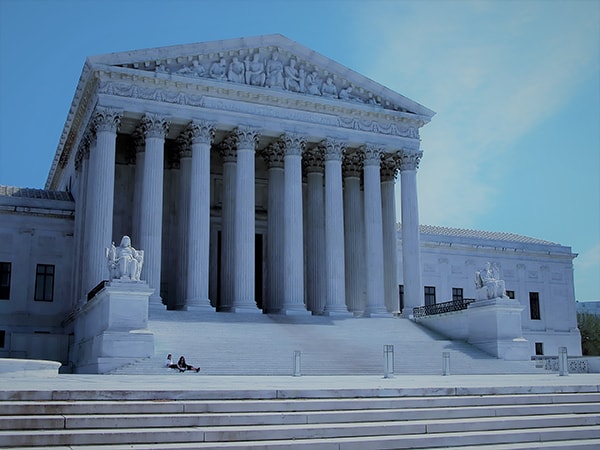Ideal Federal Appeal Lawyers: Achieving Justice in Federal Appeals
Ideal Federal Appeal Lawyers: Achieving Justice in Federal Appeals
Blog Article
Demystifying the Refine of Federal Appeals: What You Required to Know
Navigating the elaborate realm of federal allures can typically feel like traversing uncharted waters for those unknown with the procedure. Understanding the nuances of appellate court territory, the complexities of filing a notice of charm, presenting a compelling quick, and making a persuasive oral argument are essential components that can considerably influence the end result of a case. By unwinding the layers of complexity bordering government charms, individuals can get a more clear understanding into the devices that regulate this critical phase of the legal system.
Comprehending Federal Appeals Refine
Looking into the complex world of the government charms process unveils a systematic and structured trip through the judicial system. Federal appeals act as a critical device for assessing choices made by lower courts. Comprehending this process is crucial for any individual associated with lawful proceedings at the federal level.
The process normally begins with a party disappointed with a lower court's judgment filing a notice of appeal. This causes a testimonial by a greater court, where a panel of courts evaluates the lawful disagreements offered by both parties. Briefs detailing the lawful reasoning behind each party's placement are submitted, and oral disagreements might be heard to clarify intricate problems.
The appellate court's decision is based on an extensive examination of the reduced court's process and the arguments provided. As soon as the appellate court gets to a decision, it can attest, reverse, remand, or customize the lower court's judgment, providing quality and finality to the legal dispute.
Appellate Court Territory Clarified
Appellate court jurisdiction refers to the scope of instances that a particular appellate court has the power to examine and determine upon. Unlike trial courts that hear cases for the first time, appellate courts are limited to reviewing choices made by reduced courts.
Appellate courts have jurisdiction over details kinds of instances, normally those involving legal mistakes, procedural concerns, or questions of law instead of valid disagreements. The territory of appellate courts is typically described in laws and legislations that govern the court system. Understanding appellate court jurisdiction is crucial for parties associated with the allures procedure as it figures out whether a case is qualified for testimonial and the level to which the appellate court can intervene in the lower court's decision.
Filing a Notice of Allure
The preliminary step in commencing the federal charms process entails submitting a Notification of Appeal with the proper appellate court. This essential record formally alerts the court and the various other celebrations associated with the situation that the appealing event means to look for a testimonial of the reduced court's choice. Filing a Notice of Allure is a stringent step-by-step demand that sets the appellate process moving.
When preparing the Notification of Charm, it is necessary to ensure conformity with the specific guidelines and guidelines of the appropriate appellate court. federal crime lawyer. The record must generally consist of details such as the instance name, the lower court's name, the date of the judgment being appealed, and a concise statement suggesting the premises for the appeal

Instruction and Oral Disagreement
In the appellate process, presenting composed briefs and taking part in oral debates play pivotal roles in promoting for the appealing celebration's setting prior to the appellate court. Briefs are thorough legal papers that describe the celebrations' disagreements, legal authorities, and analysis sustaining their settings. These written submissions supply the court with a thorough understanding of the realities of the case, the pertinent law, and why the appealing celebration believes the lower court's choice ought to be rescinded.
Following the entry and review of the briefs, oral debates offer the parties an opportunity to more clarify their placements, resolve any questions the appellate judges might have, and highlight bottom lines from their created briefs. Oral arguments are a chance for the lawyers to encourage the judges through spoken campaigning for and feedbacks to queries from the bench.
Both the written briefs and dental disagreements are crucial components of the appellate process, permitting parties to provide their instance extensively and compellingly prior to the appellate court. - federal appeal attorneys
Receiving the Appellate Court Choice
Upon conclusion of dental disagreements and submission of written briefs, the next critical stage in the appellate procedure includes waiting for the decisive ruling from the appellate court. This period of expectancy can be full of a mix of stress and anxiety and hope for events associated with the charm. The appellate court's choice is normally delivered in a written format and outlines the court's final thoughts on the lawful concerns provided, the thinking behind their choice, and the judgment provided. The moment frame for obtaining the appellate court's decision can differ, yet courts make every effort to give prompt resolutions. As soon as the decision is provided, events have to carefully examine the court's judgment to understand the outcome and identify any type of more steps that may be essential. Whether the appellate court verifies, reverses, or remands the reduced court's decision, recognizing the effects of the judgment is essential for all celebrations entailed in the appellate process. Without delay assessing and comprehending the appellate court's decision is essential in browsing the following actions in the lawful process.
Conclusion
Understanding the appellate court jurisdiction, filing a notice of appeal, preparing briefs, and providing dental disagreements are all vital elements of this procedure. Ultimately, getting the appellate court choice can give quality and resolution to legal disagreements.
As we proceed from recognizing the federal allures procedure to dissecting the details of appellate court territory, a fundamental facet comes to light regarding the authority and restrictions of these greater courts in the legal landscape. Appellate court jurisdiction refers to the extent of instances that a specific appellate court has the power to review and make a decision upon. Unlike test courts that hear cases for the first time, appellate courts are limited to examining choices made by lower courts. Comprehending appellate court jurisdiction is crucial for celebrations involved in the appeals procedure as it establishes whether a case is qualified for evaluation and the degree to which the appellate court can intervene in the reduced court's i thought about this choice.

Report this page